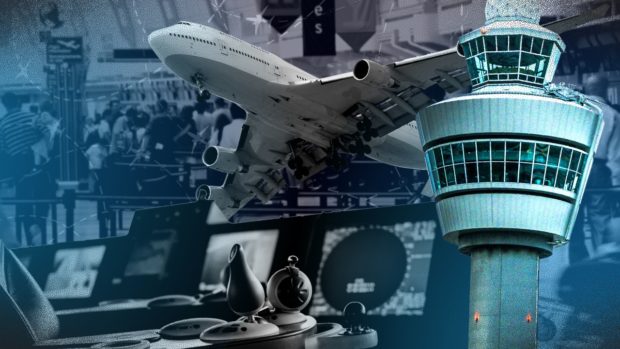All clear: Senate damning no one for New Year’s Day aviation mess

INQUIRER FILE PHOTOS
MANILA, Philippines — The sudden shutdown of the entire Philippine airspace on Jan. 1 was not due to sabotage or a cyberattack, but a result of “underlying issues” that conflated with the decades-old problems of the country’s air traffic regulatory agency, according to a Senate panel.
Sen. Grace Poe, chair of the Senate public services committee, said several measures should be undertaken immediately to improve the technical capability of the Civil Aviation Authority of the Philippines (CAAP) to avoid a repeat of the New Year’s Day airport fiasco that affected more than 65,000 passengers.
However, she said they chose not to pursue the filing of criminal and administrative charges against the past and present officials of CAAP and the Department of Transportation (DOTr).
“The committee believes that CAAP personnel on the ground did their best with the equipment, guidelines, and training given to them,” Poe said as she presented to the Senate plenary on Tuesday night the results of their investigation into the incident.
“We thus defer to the current five (officials) of CAAP to undertake the administrative investigation for disciplinary action on the culpability of any of its personnel,” Poe noted.
Article continues after this advertisement“Accountability,” she added, “will follow after we’ve laid down safety measures for our air passengers.”
Article continues after this advertisementThe senator had earlier said that the failure of past and present aviation and transportation officials to ensure the proper maintenance of CAAP’s navigation system was “itself a violation” and may be considered “incompetence or negligence on the part of the management of CAAP and not just of individuals.”
“Many people can be held accountable here in various degrees,” she told reporters on Feb. 20.
Legislation needed
Among the committee’s recommendations was the procurement of a new communication, navigation, surveillance, and air traffic management (CNS/ATM) system that would be set up in an “independent location.”
Caap had previously explained that a faulty circuit breaker and a technical glitch caused the CNS/ATM equipment to break down, paralyzing air traffic operations all over the country. More than 360 international and local flights were canceled and delayed due to the incident.
The panel also proposed the passage of four key pieces of legislation — the creation of the Philippine Transportation Safety Board, the Philippine Airports Authority Act, the amendment to the CAAP charter, and the Air Passengers Bill of Rights — to improve the country’s air travel and navigation systems.
“To improve the technical capacity of CAAP, we recommend the urgent replacement and upgrading of critical equipment,” Poe said.
“The Jan. 1 ‘systems failure’ was indeed a confluence of factors and errors. Experts likened it to the planets aligning, albeit, with an unfortunate consequence,” she added.
Despite the susceptibility of its cybersecurity system, aging computer units, and lack of security cameras, she said there was no evidence that the incident was caused by a cyberattack.
“However, a conclusive finding negating the cyberattack potential will depend on the UPS (uninterruptible power supply) data logs sent to Turkey for examination,” Poe said.
Naia privatization
She also pointed out that the studies on the proposed privatization of Ninoy Aquino International Airport (NAIA) should be expedited.
After conducting public hearings and a physical inspection of CAAP facilities, Poe said they discovered “several underlying issues” that contributed to the system failure.
One of these was the lack of engineering standards and guidelines in the maintenance and troubleshooting of the navigation equipment.
CAAP also failed to come up with a system evaluation and comply with the energy audit as mandated under Republic Act No. 11825, or the Energy Efficiency and Conservation Act.
“There is also no proper personnel training and a glaring lack of electrical engineers. Sumitomo, the third-party maintenance provider, also never got the chance to continue providing technical assistance due to a pending dispute with DOTr,” Poe said.
“To illustrate, it’s like a hospital that has no specialist doctors. While there are nurses, they are not trained to provide medical care to patients with specific ailments,” she added.
The Manila International Airport Authority initially attributed the problem to “technical issues” without giving other details.
More than eight hours after the problem was detected, the DOTr said the system had been partially restored, but not after leaving thousands of passengers stranded in airport terminals.